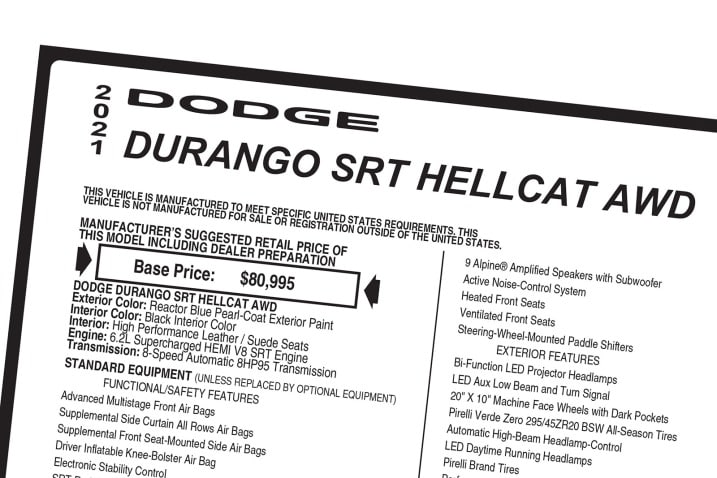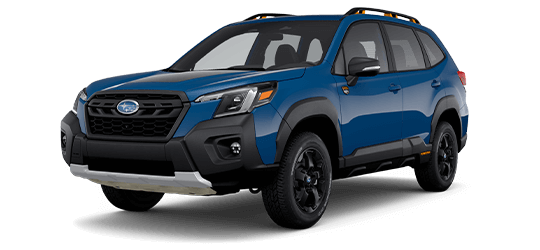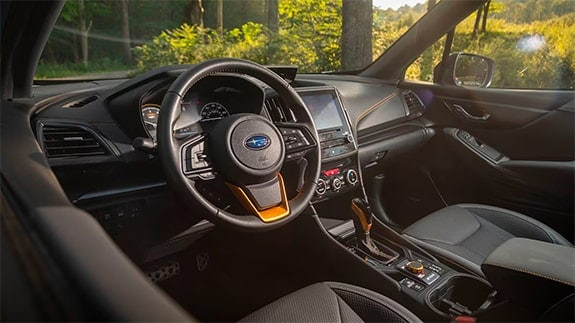The Edmunds Suggested Price will tell you when dealers are asking (and are likely to get) sticker price. It's usually a matter of supply and demand. If this is the case for a car you really want, you should consider just paying the sticker price and moving on with your life.
But there are those buyers who try to adhere to the "never pay retail" battle cry, even for a hot car that's just come on the market. That's their right, of course, but it might be time-consuming and ultimately lead to frustration. So it helps to understand when a dealer is going to charge sticker price — and mean it.
First, buyers need to know some car pricing terms. "Sticker price" refers to the bottom-line price displayed on a car's window or Monroney sticker. Notably, the sticker price is technically not the same as the manufacturer's suggested retail price (MSRP). The MSRP is a key line item on the Monroney as well, but it doesn't include the destination fee, and sometimes there will also be unrelated costs like a gas guzzler tax. Add these components up and you've got the sticker price.
Buyers usually treat the sticker price as an "asking price" and try to negotiate a discount. That often works. But in some cases, it won't. And keep in mind that even within a single dealership there could be pricing differences, depending on whether you contact a salesperson on the floor or the internet manager (who will often give lower prices).
Here are some common situations that lead a dealer to charge full sticker price and refuse to come down from it:
1. When a car first hits the showroom. Some new cars are highly anticipated, and even before the car reaches the dealership, there is a waiting list of eager buyers. Some dealerships even try to get more than sticker price for these cars by including an addendum to the Monroney that stipulates a "market adjustment" of $1,000 or much more. It may be possible to negotiate all or part of the markup away, but a dealer's determination to charge sticker price is a fact of life when demand is high.
2. When you want a hard-to-find combination of color and options. If you've searched the entire state for a Porsche 911 in Python Green with a manual transmission and found one at a dealership 300 miles away from you, it will be hard to get a discount. That's because the salesperson knows it is unique and that you really want it. If the salesperson won't budge, where's your leverage? You can't tell the salesperson you'll go to the competition since there is none. You can always ask for the dealer's "best price," or simply request a discount. But if the answer is no and you still want the car, you'll have to pay sticker.
3. When you're buying in a geographically isolated or wealthy area. In some sections of the country, there are people who seem unwilling to travel outside their immediate area to buy a car and don't take advantage of online car shopping options that often involve delivery to the customer's door. There might also be only one dealership for each carmaker and very low sales volume as well. The local dealers w they have a captive market may hold the line on price. Santa Barbara, California, a wealthy and somewhat isolated area, is one example of this. Fort Myers and Naples in Florida are others. In Oregon and Washington, some coastal areas have isolated communities with just one dealership. In such places, you may be more likely to find prices at or near sticker.



 by
by 
